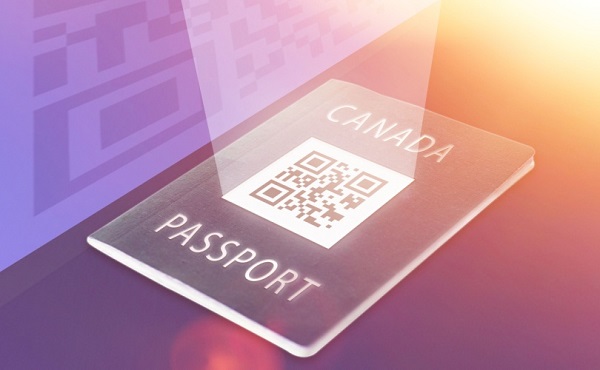Opinion
Journalism: Back to Basics

How cool is it that in the 21st century it isn’t just news anchors, professional investigative journalists or beat reporters that bring us news and current events? Today, average JoAnne Public contributes to a globally collective knowledge. What is less cool, however, is the vast amount of not-really journalistic style writing that permeates media with biased opinions or fake news. Sometimes it’s hard to decipher good journalistic pieces from stories rife with personal beliefs or judgements. Whether you are a reader or writer of today’s news, keeping an eye out for just a few ‘tells’ means you’ll perhaps consume or create more real news and fewer opinion pieces.
Accuracy
It’s pretty exciting to be the first to report a story, or to read the earliest account of a story. You know what is less exciting? Finding out you read misinformation after you shared it with friends, or learning you released a story before all your facts were confirmed. It is far better to be right than to be first; both as a reader and a writer. I think we can all agree that anything premature is, well…not great.
Sources
Remember back in school when you had to write a bibliography to prove where you found your information? The same basic rules apply to good news reporting too. Although citations don’t always have to be formal, there should be some mention of the source of the information. This doesn’t mean confidential contributors should be named, though. Sometimes protection of privacy is important to a story!
Naming sources not only lends credibility to a story, but doing so supports the validity of any quoted numbers or stats too. For example, I could tell you eleventy nine percent of drivers pick their noses at a stop light. If I don’t also tell you which studies prove this, shouldn’t you question the legitimacy of that statistic?
Free from Bias
Good reporting demands sharing all sides of a story. We’ve all read stories about kids constantly on their devices today and never looking up to experience the people right in front of them. Presumably, they’re on social media, playing games, and generally wasting their lives. But what about the kid texting a parent living away from the family home, or communicating with a teacher about an assignment, or talking a friend through a trying time? Do we also get to read about how those kids are experiencing real relationships, trauma, joy, or easing the loneliness of a loved one through their device? Do we get to learn about how that kid is making a difference in the life of another not sitting in that group?
It’s important for good journalism to tell all sides of the story without injecting personal views, emotional attachment to one side or the other, and to keep stereotypes out of the story. According to the Reuters Handbook of Journalism, although it’s acceptable to include other people’s opinions in a story, the writer should steer clear of expressing their own opinions. So as long as both the kid with her face in her device AND, for example, the disapproving onlooker both have a voice in a story, it all balances out!
We all know if it’s on the Internet it must be true, but keeping an eye out for legitimate journalism fosters the smartitude in all of us.
Automotive
Ford’s EV Fiasco Fallout Hits Hard


From the Daily Caller News Foundation
I’ve written frequently here in recent years about the financial fiasco that has hit Ford Motor Company and other big U.S. carmakers who made the fateful decision to go in whole hog in 2021 to feed at the federal subsidy trough wrought on the U.S. economy by the Joe Biden autopen presidency. It was crony capitalism writ large, federal rent seeking on the grandest scale in U.S. history, and only now are the chickens coming home to roost.
Ford announced on Monday that it will be forced to take $19.5 billion in special charges as its management team embarks on a corporate reorganization in a desperate attempt to unwind the financial carnage caused by its failed strategies and investments in the electric vehicles space since 2022.
Cancelled is the Ford F-150 Lightning, the full-size electric pickup that few could afford and fewer wanted to buy, along with planned introductions of a second pricey pickup and fully electric vans and commercial vehicles. Ford will apparently keep making its costly Mustang Mach-E EV while adjusting the car’s features and price to try to make it more competitive. There will be a shift to making more hybrid models and introducing new lines of cheaper EVs and what the company calls “extended range electric vehicles,” or EREVs, which attach a gas-fueled generator to recharge the EV batteries while the car is being driven.
Dear Readers:
As a nonprofit, we are dependent on the generosity of our readers.
Please consider making a small donation of any amount here.
Thank you!
“The $50k, $60k, $70k EVs just weren’t selling; We’re following customers to where the market is,” Farley said. “We’re going to build up our whole lineup of hybrids. It’s gonna be better for the company’s profitability, shareholders and a lot of new American jobs. These really expensive $70k electric trucks, as much as I love the product, they didn’t make sense. But an EREV that goes 700 miles on a tank of gas, for 90% of the time is all-electric, that EREV is a better solution for a Lightning than the current all-electric Lightning.”
It all makes sense to Mr. Farley, but one wonders how much longer the company’s investors will tolerate his presence atop the corporate management pyramid if the company’s financial fortunes don’t turn around fast.
To Ford’s and Farley’s credit, the company has, unlike some of its competitors (GM, for example), been quite transparent in publicly revealing the massive losses it has accumulated in its EV projects since 2022. The company has reported its EV enterprise as a separate business unit called Model-E on its financial filings, enabling everyone to witness its somewhat amazing escalating EV-related losses since 2022:
• 2022 – Net loss of $2.2 billion
• 2023 – Net loss of $4.7 billion
• 2024 – Net loss of $5.1 billion
Add in the company’s $3.6 billion in losses recorded across the first three quarters of 2025, and you arrive at a total of $15.6 billion net losses on EV-related projects and processes in less than four calendar years. Add to that the financial carnage detailed in Monday’s announcement and the damage from the company’s financial electric boogaloo escalates to well above $30 billion with Q4 2025’s damage still to be added to the total.
Ford and Farley have benefited from the fact that the company’s lineup of gas-and-diesel powered cars have remained strongly profitable, resulting in overall corporate profits each year despite the huge EV-related losses. It is also fair to point out that all car companies were under heavy pressure from the Biden government to either produce battery electric vehicles or be penalized by onerous federal regulations.
Now, with the Trump administration rescinding Biden’s harsh mandates and canceling the absurdly unattainable fleet mileage requirements, Ford and other companies will be free to make cars Americans actually want to buy. Better late than never, as they say, but the financial fallout from it all is likely just beginning to be made public.
- David Blackmon is an energy writer and consultant based in Texas. He spent 40 years in the oil and gas business, where he specialized in public policy and communications.
International
TOTAL AND COMPLETE BLOCKADE: Trump cuts off Venezuela’s oil lifeline

President Trump on Tuesday ordered a “total and complete” blockade of all sanctioned oil tankers moving into or out of Venezuela, sharply escalating pressure on the socialist regime of Nicolás Maduro and framing the move as a national security response to terrorism, drug trafficking, and the theft of American assets.
In a Truth Social post, Trump announced that his administration has formally designated the Venezuelan regime a Foreign Terrorist Organization and directed U.S. forces to interdict sanctioned oil shipments tied to Caracas. He said Venezuela is now “completely surrounded by the largest Armada ever assembled in the History of South America,” adding that previously announced airspace restrictions remain in effect. Trump accused the Maduro government of using oil from “stolen Oil Fields” to finance “Drug Terrorism, Human Trafficking, Murder, and Kidnapping,” warning that the blockade will only expand until the regime returns “all of the Oil, Land, and other Assets that they previously stole from us.”
“For the theft of our Assets, and many other reasons, including Terrorism, Drug Smuggling, and Human Trafficking, the Venezuelan Regime has been designated a FOREIGN TERRORIST ORGANIZATION,” Trump wrote. “Therefore, today, I am ordering A TOTAL AND COMPLETE BLOCKADE OF ALL SANCTIONED OIL TANKERS going into, and out of, Venezuela.” Trump also tied the move to immigration enforcement, saying the “Illegal Aliens and Criminals that the Maduro Regime has sent into the United States during the weak and inept Biden Administration are being returned to Venezuela at a rapid pace,” and adding that America “will not allow Criminals, Terrorists, or other Countries, to rob, threaten, or harm our Nation.”
The announcement comes days after U.S. forces seized a sanctioned oil tanker off the Venezuelan coast, an incident that sparked an angry response from Caracas. Maduro denounced the seizure as piracy, comparing it to “Pirates of the Caribbean,” and, moments before Trump’s statement was released, called for a coordinated international protest by oil workers. Speaking at a regime event, Maduro urged labor groups and maritime organizations to mobilize against what he called U.S. “piracy,” saying the oil working class must defend Venezuela’s right to trade its main export in international forums.
Following Trump’s order, the Maduro regime issued an official statement condemning what it called an “irrational naval blockade” and accusing Washington of attempting to steal Venezuela’s national wealth. The statement said Venezuela’s ambassador to the United Nations would denounce the action and urged people in the United States and abroad to “reject this extravagant threat by any means necessary.” Trump’s move marks one of the most aggressive steps yet in his renewed confrontation with Maduro, signaling a willingness to use direct military and economic pressure to choke off the oil revenue that keeps the regime afloat.
(AP Photo/Ariana Cubillos)
-

 armed forces2 days ago
armed forces2 days agoOttawa’s Newly Released Defence Plan Crosses a Dangerous Line
-

 Daily Caller1 day ago
Daily Caller1 day agoParis Climate Deal Now Decade-Old Disaster
-

 Business19 hours ago
Business19 hours agoOttawa Pretends To Pivot But Keeps Spending Like Trudeau
-

 Energy18 hours ago
Energy18 hours agoLiberals Twisted Themselves Into Pretzels Over Their Own Pipeline MOU
-

 Censorship Industrial Complex16 hours ago
Censorship Industrial Complex16 hours agoHow Wikipedia Got Captured: Leftist Editors & Foreign Influence On Internet’s Biggest Source of Info
-

 Alberta1 day ago
Alberta1 day agoAlberta’s huge oil sands reserves dwarf U.S. shale
-

 Business2 days ago
Business2 days agoCanada’s recent economic growth performance has been awful
-

 Alberta2 days ago
Alberta2 days agoCanada’s New Green Deal









